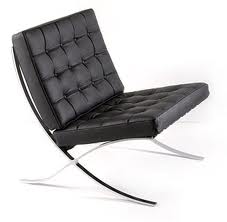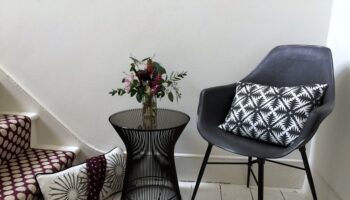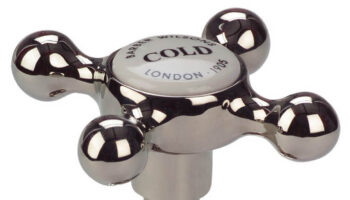Such is the iconic status of the Barcelona chair that it has its own page in the Barcelona Yellow Pages. Not only that but it is one of the oldest modern classics still around. It was designed in 1929 for the Spanish Royal Family by the German designer Ludwig Mies van der Rohe.
Along with his peers Le Corbusier and Walter Gropius, Mies (as he is commonly known) is regarded as one of the pioneers of modern furniture. His style was deceptively simple with clean lines and he used modern materials such as stainless steel and plate glass in his buildings, which he referred to as “skin and bones” architecture.
Born Ludwig Mies, he added the van der and his mother’s maiden name Rohe, perhaps to hide his humble roots as a tradesman’s son, who began his career in his father’s stone carving shop, and had no formal training.
He came up with a series of pioneering designs in the search for a style that would be suitable for the modern industrial age. While many of his ideas remained unbuilt, in 1929 he was asked to design the German Pavilion for the
Barcelona Exposition.
As part of his design (a replica of which stands on the site today), he made two chairs for King Alfonso XIII and his wife Ena in case they required a rest while visiting. According to the aforementioned yellow pages, Mies drew his inspiration from an Egyptian folding chair and a Roman folding stool. It was supposed to bring to mind a throne. Unfortunately the royal couple never sat in the pavilion.
The following year, he was appointed director of the Bauhaus School until 1933 when it was shut down by the Nazis. Four years, he later he moved to the States and eventually became a US citizen. He designed several high rise buildings there from the Chicago twin towers to the Seagram in New York. He was also asked to design the new national gallery for Berlin and while he visited several times during its construction he never went back to live in Germany.
In 1950, Mies redesigned his old Barcelona chair using modern techniques which allowed the frame to be moulded from a single piece of stainless steel rather than being bolted together. The original pigskin seat was replaced with cow leather.
The chair was taken up by Knoll who still produce it to this day. While it is a mass-produced item, the upholstery consists of 40 individual panels made from a single hide so it has the qualities of a hand-made piece, which goes someway to accounting for the price.
Thanks to its rather sculptural appearance it is often found in foyers or minimalist dwellings and can cost around £4,500 for a licenced Knoll version.
For an extra £2,000 you can have the matching Barcelona ottoman too.
And should the price not be enough to inform you of the chair’s authenticity, there should also be a Knoll signature and a serial number.
First published in The Independent






